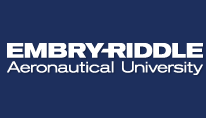T2-A: The Assessment Process for ME 321 Mechanical Experimentation II: A Second Course in Experimentation
Location
Bill France A
Start Date
5-3-2018 1:45 PM
Description
This paper describes the process adopted by the Department of Mechanical Engineering at George Mason University (GMU) to demonstrate the levels achievement of course learning outcomes and students outcomes, and reports initial results for an undergraduate mechanical engineering experimentation course, ME 321 Mechanical Experimentation II. ME 321, which introduces students to real world applications in fluid mechanics, heat transfer and thermodynamics, is the second of a two-course sequence offered during the junior year of the mechanical engineering curriculum. ME 321 has five course learning outcomes that have been mapped into four student outcomes to assess student learning. The levels of attainment for the course learning (CLO) and student outcomes (SO) are documented using the Mechanical Engineering Assessment Report (MEAR), specifically in the course assessment form (CAF). For this initial implementation of the process, evaluation of course learning outcomes for two sections are consistent, indicating that the largest percent difference between the levels achievement and attainment occurs for outcome 2 and the smallest occurs for outcome 4.
T2-A: The Assessment Process for ME 321 Mechanical Experimentation II: A Second Course in Experimentation
Bill France A
This paper describes the process adopted by the Department of Mechanical Engineering at George Mason University (GMU) to demonstrate the levels achievement of course learning outcomes and students outcomes, and reports initial results for an undergraduate mechanical engineering experimentation course, ME 321 Mechanical Experimentation II. ME 321, which introduces students to real world applications in fluid mechanics, heat transfer and thermodynamics, is the second of a two-course sequence offered during the junior year of the mechanical engineering curriculum. ME 321 has five course learning outcomes that have been mapped into four student outcomes to assess student learning. The levels of attainment for the course learning (CLO) and student outcomes (SO) are documented using the Mechanical Engineering Assessment Report (MEAR), specifically in the course assessment form (CAF). For this initial implementation of the process, evaluation of course learning outcomes for two sections are consistent, indicating that the largest percent difference between the levels achievement and attainment occurs for outcome 2 and the smallest occurs for outcome 4.


